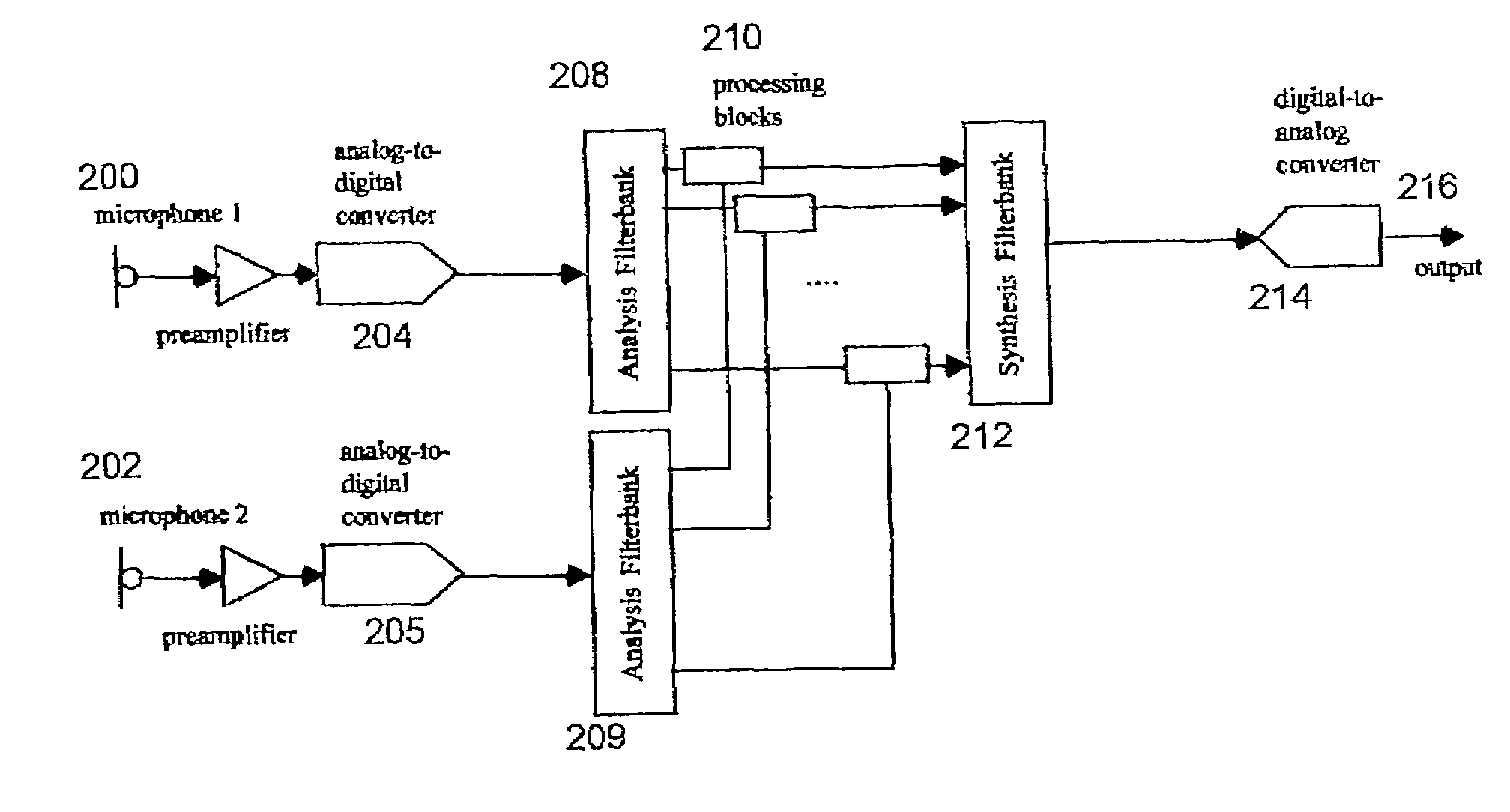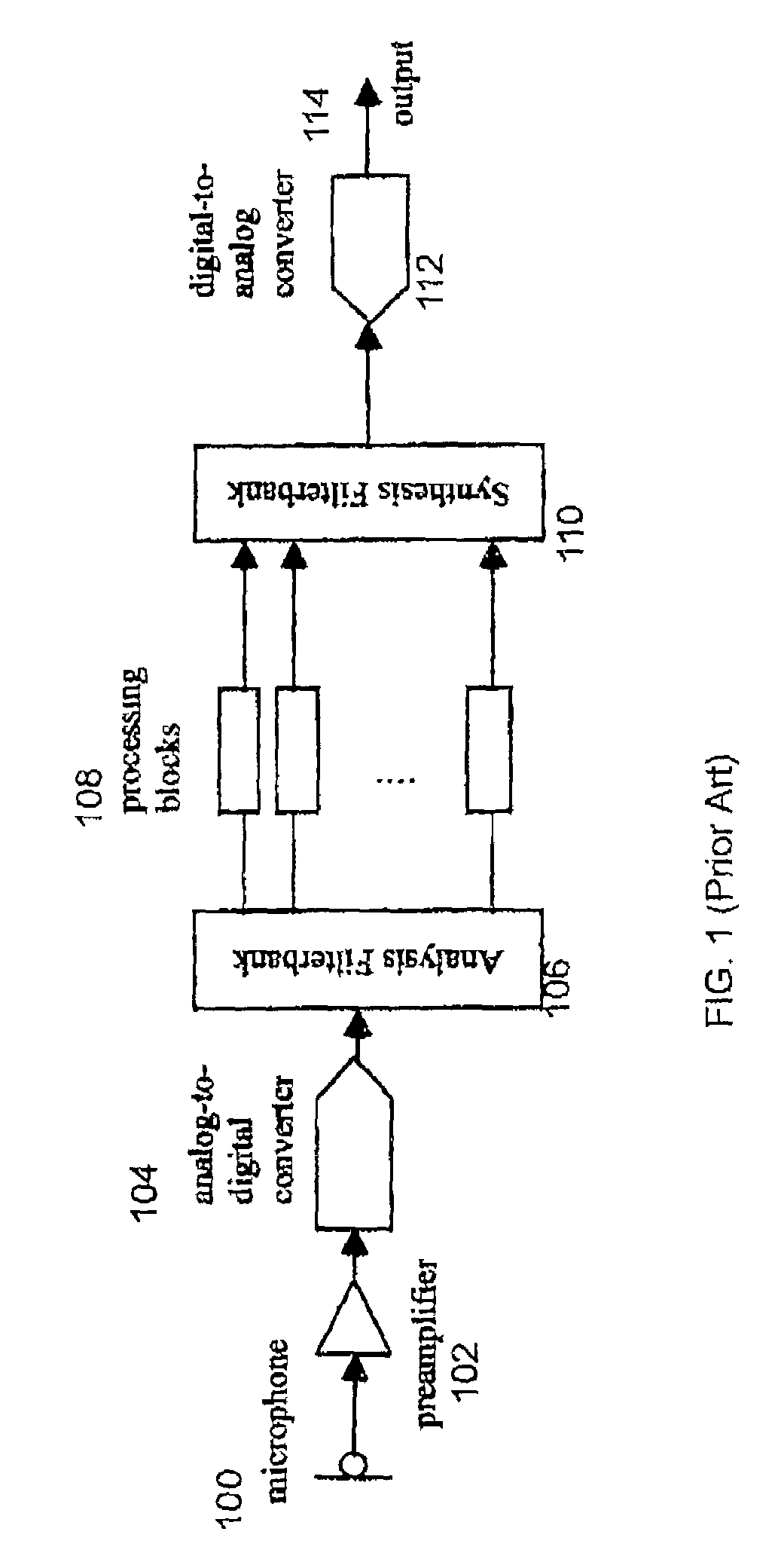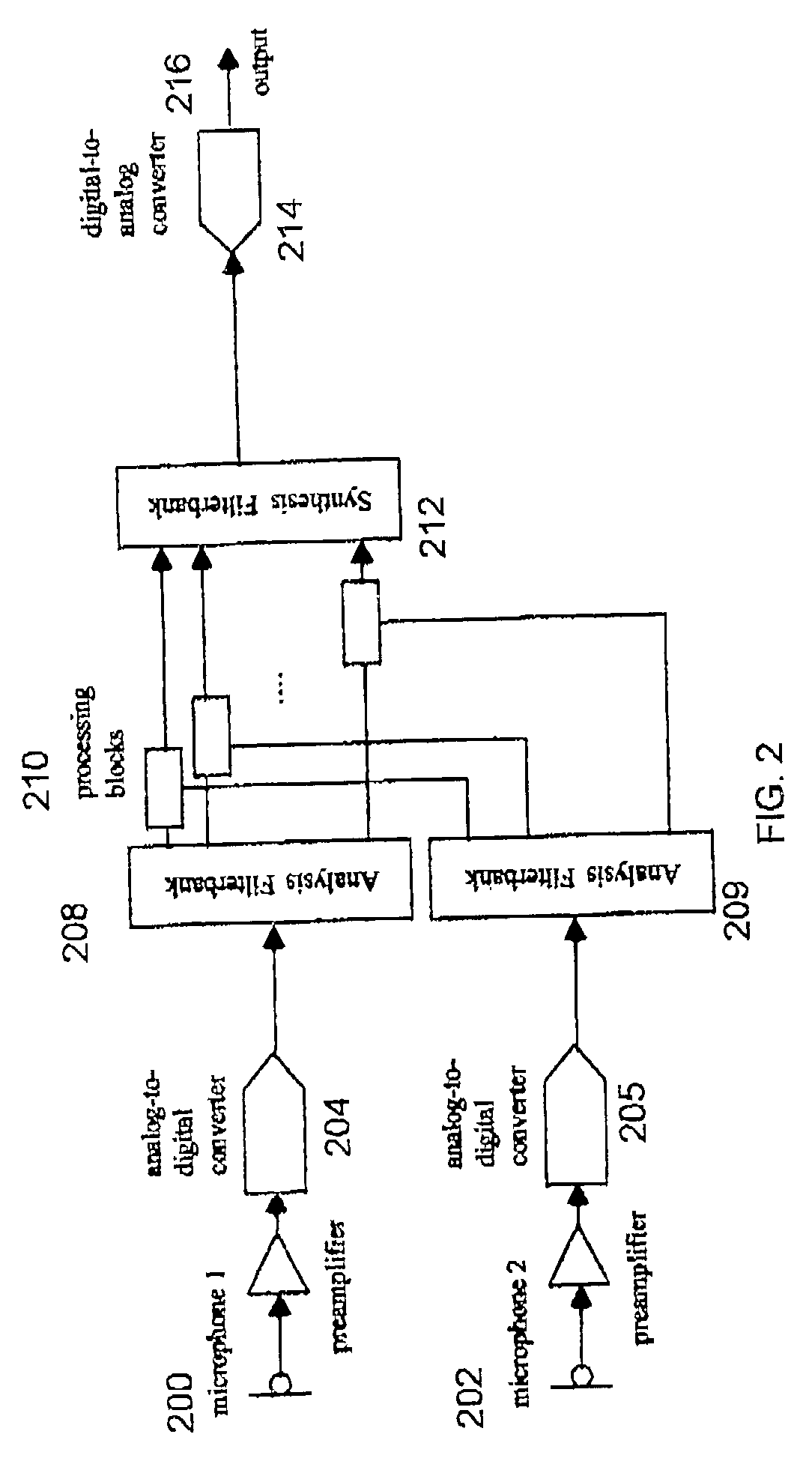Sub-band adaptive signal processing in an oversampled filterbank
a signal processing and filterbank technology, applied in the field of signal processing, can solve the problems of poor isolation and long group delay, and achieve the effects of improving the overall effectiveness of signal processing applications, improving system performance, and fast convergen
- Summary
- Abstract
- Description
- Claims
- Application Information
AI Technical Summary
Benefits of technology
Problems solved by technology
Method used
Image
Examples
Embodiment Construction
)
[0034]FIG. 1 shows The signal path through a basic oversampled WOLA filterbank system operating in mono mode. The signal from the Microphone 100 passes through a preamplifier 102 to an analog to digital converter 104. The resultant digital signal output by the converter is passed into the analysis filterbank 106 that is programmed to divide the signal into sub-bands. Each sub-band is then passed to one of the Processing Blocks 108 whose outputs are combined by the Synthesis Filterbank 110 into a single digital signal that is passed in turn to a digital to analog converter 112 to produce an analog output 114. Similarly FIG. 2 shows the signal path through a basic oversampled WOLA filterbank system operating in ‘stereo mode’, although in this case the term is somewhat misleading, since although there are two inputs to the system, there is only one output. The signals from the two microphones 200, 202 each pass through respective preamplifiers 201, 203 to respective analog to digital ...
PUM
 Login to View More
Login to View More Abstract
Description
Claims
Application Information
 Login to View More
Login to View More - R&D
- Intellectual Property
- Life Sciences
- Materials
- Tech Scout
- Unparalleled Data Quality
- Higher Quality Content
- 60% Fewer Hallucinations
Browse by: Latest US Patents, China's latest patents, Technical Efficacy Thesaurus, Application Domain, Technology Topic, Popular Technical Reports.
© 2025 PatSnap. All rights reserved.Legal|Privacy policy|Modern Slavery Act Transparency Statement|Sitemap|About US| Contact US: help@patsnap.com



